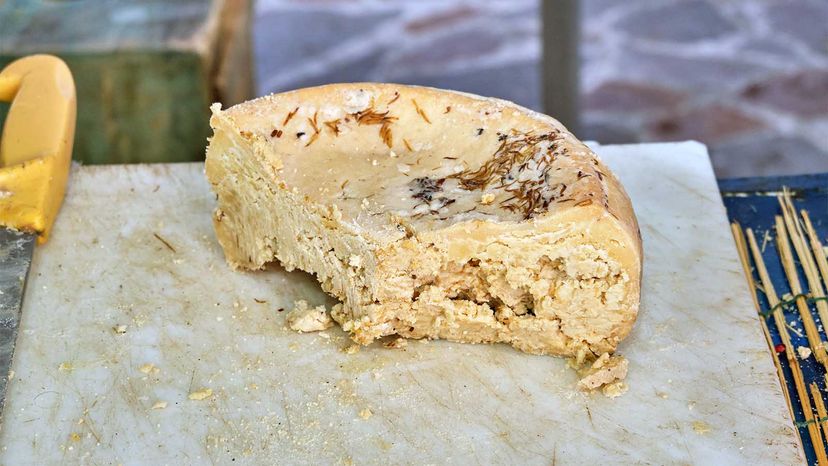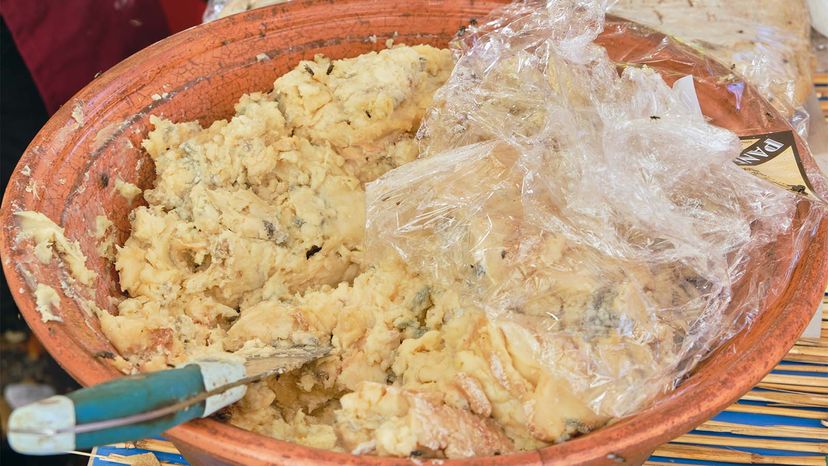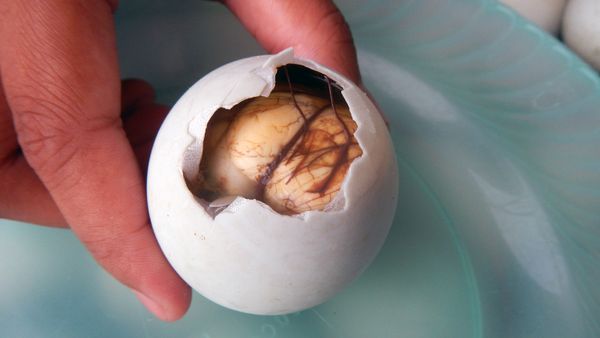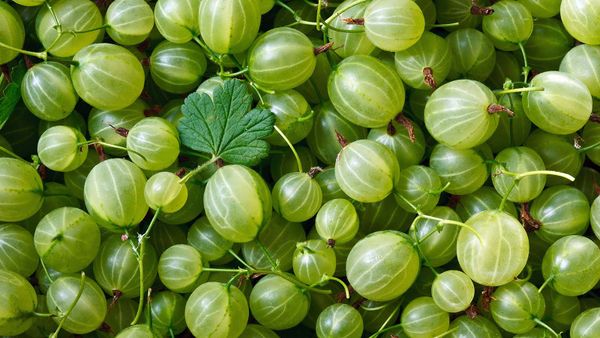Like many cultural foods, it's believed this unique cheese happened by chance. After all, it's hard to imagine someone deliberately putting fly larvae in their cheese without having some idea that it could make the cheese better.
Although today some cheese makers do add the larvae into the wheels for the magic to happen, others put their cheese in the hands of nature.
Despite being dubbed the "world's most dangerous cheese" by Guinness World Records in 2009, so far there is no record of anyone dying from eating any. But food scientists have proven that flies can spread bacteria that can cause food poisoning, including salmonella. And those maggots? Well, they aren't healthy either. As they do their thing in the cheese, they can create cadaverine and putrescine — compounds produced when amino acids decompose in decaying animals that can be toxic in high doses.
But Sardinians have been eating this culinary delicacy for centuries — and they still eat tons of it. For those brave enough to bite this creamy goodness with living maggots squirming around, there's a bigger concern about what can happen afterward. There can be health consequences if you don't properly chew the maggots before you swallow them.
"One of the big risks of eating casu marzu is that the maggots can survive the chewing and digesting process and make themselves comfy in your gastrointestinal tract, causing something called intestinal myiasis," says Birnbaum. "For this reason, even many cheese professionals I know say they would avoid the cheese if it was offered to them."
Now you might be thinking why not just remove the maggots from the cheese before serving and you eliminate the health risks, right? Unfortunately, it's a bit more complicated. "It's not that the maggots need to be alive when the cheese is consumed, it's more a matter of them being difficult to kill while inside the wheel," explains Birnbaum. "Once the cheese is ripe and ready to eat, the maggots are quite numerous, and waiting for them to grow into flies would change the cheese's flavor and texture into something totally different, which some say is even more dangerous to eat."
And if you find dead maggots in the wheel, you definitely don't want to eat it — that's a sure fire sign it's gone bad.
Birnbaum says you can refrigerate or place a portion of the cheese in a sealed paper bag until the maggots suffocate to kill them — neither affects the cheese, she explains. And you won't have to worry about wiggling fly larvae in your stomach, that is, if you can get past the fact that you're eating maggots in your cheese to begin with.



